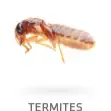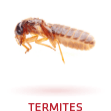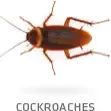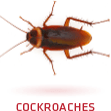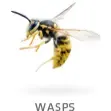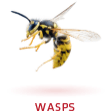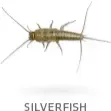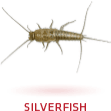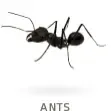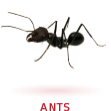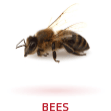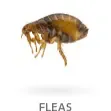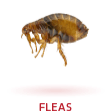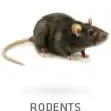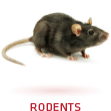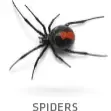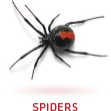Termite Inspection Checklist: A Complete Guide for BP Pest Control PerthTermites are one of the most destructive pests for homes and businesses in Perth. Their silent and sneaky behaviour can lead to significant damage, often going unnoticed until it’s too late. At BP Pest Control Perth, we understand the importance of proactive measures to safeguard your property. That's why we’ve compiled a detailed termite inspection checklist to help you identify potential risks and ensure your home stays termite-free.Why is Termite Inspection Important?
Termites feed on wood and other cellulose-based materials, which are commonly found in the structure of homes. A termite infestation can weaken the integrity of your property, leading to costly repairs if not addressed promptly. Regular termite inspections are crucial to detecting any signs of an infestation early and preventing long-term damage.BP Pest Control Perth’s Comprehensive Termite Inspection Checklist Whether you are a homeowner or a business owner in Perth, performing a detailed inspection can help you catch termite problems before they become serious. Here’s a checklist of the key areas BP Pest Control professionals will focus on during an inspection: 1. Exterior InspectionFoundation and Walls: Termites often enter buildings through the foundation. Check for any cracks or gaps in the exterior walls, foundation, or around windows and doors that might serve as entry points. Termite Shelter Tubes: Termites build tubes to travel between their nest and food source. Inspect the exterior for these tubes, typically found on the foundation or the lower walls. Wood and Timber Structures: Look for any wood that appears soft, hollow, or damaged. This could be an indicator of termite activity inside. Moisture Areas: Termites are attracted to moisture, so check for leaky faucets, downpipes, and areas of the property that might have water pooling or excess dampness. 2. Interior InspectionWooden Fixtures: Look for signs of termite damage in wooden furniture, floorboards, and beams. Tap along wooden surfaces – a hollow sound is a red flag. Ceilings and Walls: Check ceilings and walls for any bubbling paint or peeling wallpaper. These can be signs of moisture caused by termites feeding on the wood behind the surface. Basement and Crawl Spaces: If your home has a basement or crawl space, inspect it for signs of termite activity, such as mud tubes, droppings, or damaged wooden supports. Doors and Windows: Ensure that wooden doors and windows close properly. If they stick or seem misaligned, it could be due to termite activity inside the frame. 3. Roof and Attic InspectionRoof Timbers: Examine roof beams, rafters, and the attic for any visible signs of termite damage. Keep an eye out for any sagging wood or unusual softness. Ventilation Systems: Adequate airflow in the attic prevents moisture buildup, which attracts termites. Make sure that vents are clear and functioning. Gaps and Leaks: Check for any gaps, cracks, or leaks in the roof that could be potential entry points for termites. 4. Surrounding EnvironmentTree Stumps and Wood Piles: Termites can often be found in rotting wood, so inspect your yard for tree stumps, firewood piles, or old timber structures that might serve as a breeding ground for termites. Mulch and Landscaping: Excessive mulch or vegetation near the foundation can attract termites by creating a damp environment. Ensure that mulch is not piled too high against your home’s exterior. 5. Signs of Termite ActivityTermite Droppings (Frass): Drywood termites produce tiny droppings that look like small pellets. Finding frass near wooden structures is a strong indication of termite presence. Hollowed Wood: Termites feed on the inside of wood, leaving the outer layer intact. Tap or knock on wooden structures – a hollow sound can signal internal damage. Why Choose BP Pest Control Perth for Termite Inspections?At BP Pest Control Perth, our team of Pest Control experts follows this comprehensive checklist to ensure that every inch of your property is thoroughly inspected for termites. We aim to detect any signs of termite activity early so we can take immediate action to protect your property. Here’s why you should trust BP Pest Control Perth:Experienced Professionals: Our team has years of experience handling pest control in Perth, specifically termite inspections and treatments. Advanced Technology: We use the latest tools and technologies to detect termites, including thermal imaging cameras and moisture meters. Eco-friendly Solutions: Our termite control methods are safe for your family, pets, and the environment. Comprehensive Reports: After every inspection, you will receive a detailed report outlining the findings, including any necessary recommendations or treatments. How Often Should You Schedule a Termite Inspection?In Perth, it’s advisable to schedule a termite inspection at least once a year, especially if your property is near bushland or has a history of termite problems. However, if you suspect termite activity or notice signs of an infestation, it’s crucial to call in a professional as soon as possible. Termite damage is preventable with regular inspections and early detection. By following BP Pest Control Perth’s comprehensive termite inspection checklist, you can protect your property from the hidden dangers of termites.Contact us today to schedule an inspection, and rest easy knowing your home is safeguarded against these silent destroyers. Return |


